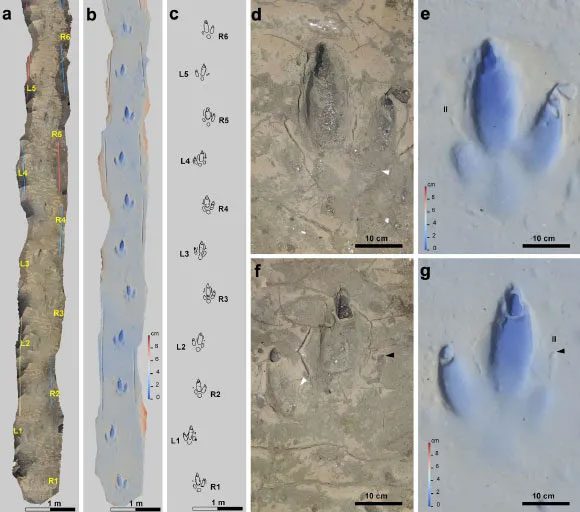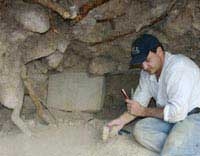A species from the ancient and fierce carnivorous bird family Phorusrhacidae, known as the “terror bird,” has left valuable traces along the coast of Argentina.
According to Sci-News, terror birds represent a large family of flightless carnivorous birds that are now extinct. The largest among them could weigh up to 70 kg (154 lbs) and stand 2 meters (6.5 feet) tall.
This marks the first time scientists have discovered a particularly important type of fossil: the footprints of terror birds. These footprints serve as valuable snapshots frozen in stone, providing insights into the skin and movement of these creatures.

Fossils revealed along the coast – (Photo: SCIENTIFIC REPORT).
These 3.5 million-year-old fossils were uncovered at coastal outcrops of the Rio Nergeo Formation in San Maias Bay, on the Atlantic coast of Argentina.
The research team, led by the National University of La Pampa (Argentina), stated that these are the unique footprints of terror birds found worldwide.

Portrait of the terror bird when it existed – (Photo: SCIENTIFIC REPORT)
This discovery has unveiled unprecedented information about the movement of this fearsome carnivorous bird, demonstrating its remarkable adaptability for running and hunting in its environment.
The structure of the fourth toe on its foot enhances stability while running, along with the combination of a large curved claw on the second toe and an adjacent ankle pad that strongly supports its ability to pin down and capture prey.
It was also running at an impressive speed of 2.74 meters per second at the time it left its footprints on the sediment of an ancient lake.
This further confirms the species’ proficiency in both running and wading through water, reinforcing their status as the dominant predators in the regional ecosystem, according to a publication in Scientific Reports.





















































